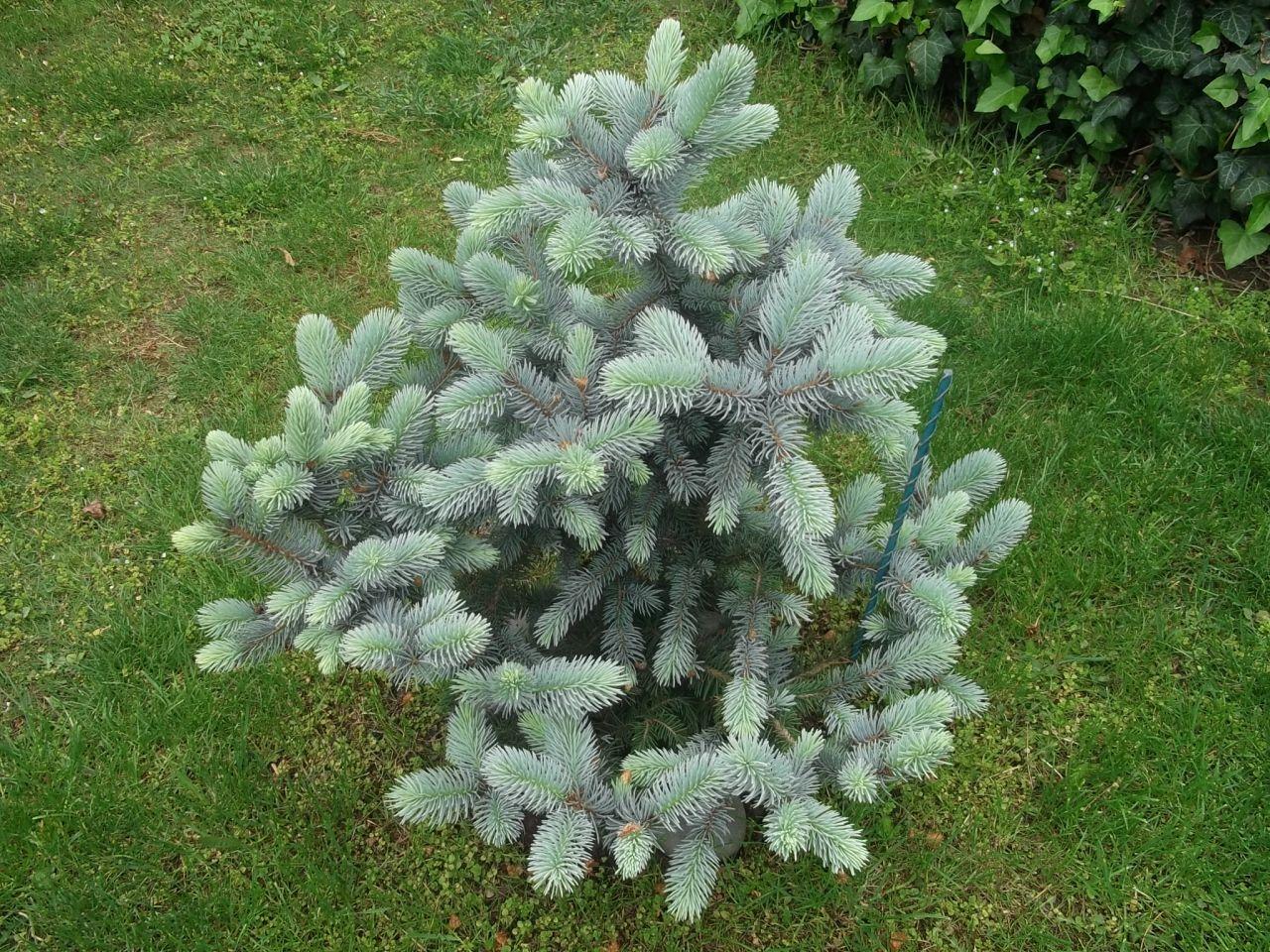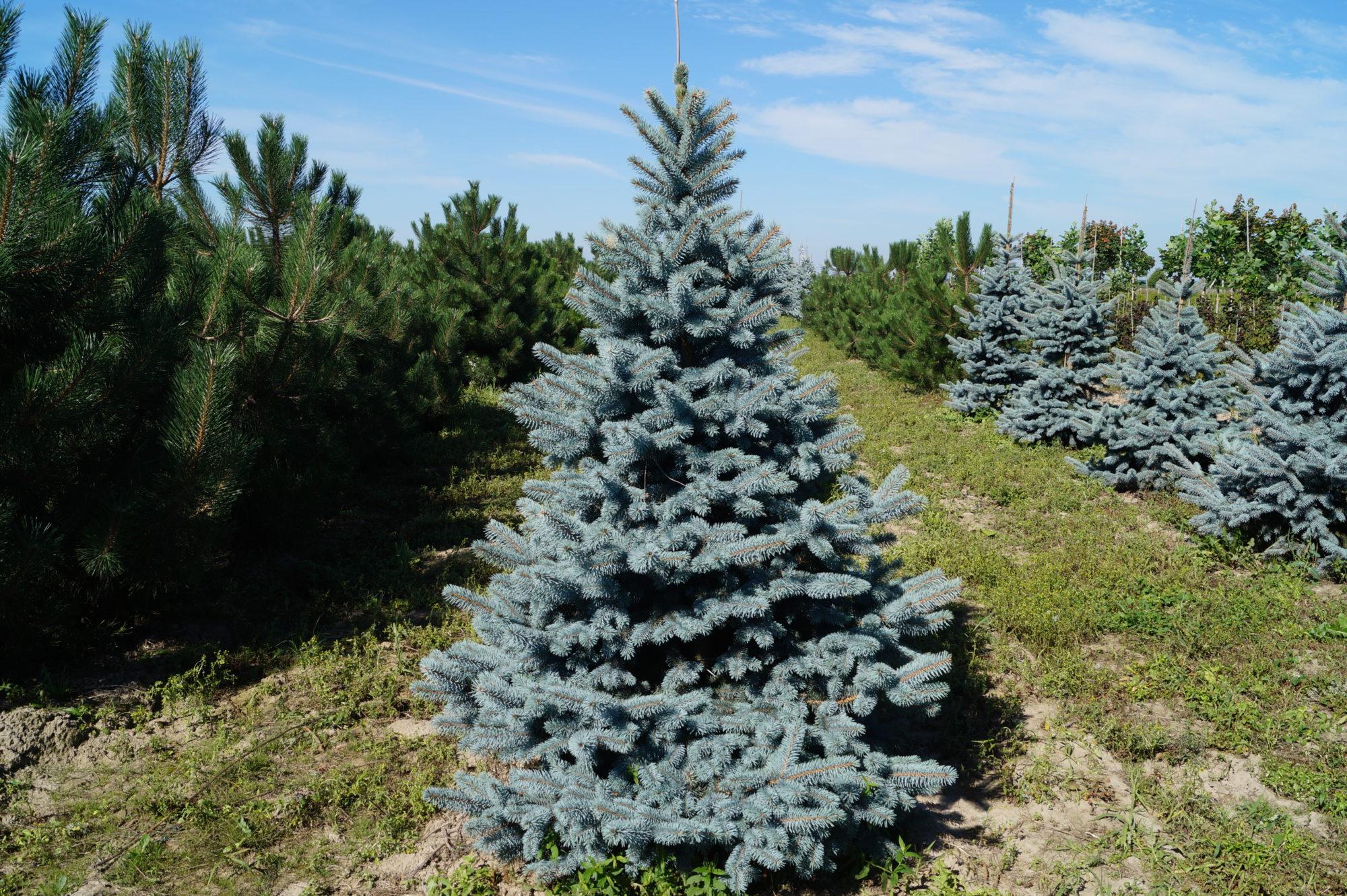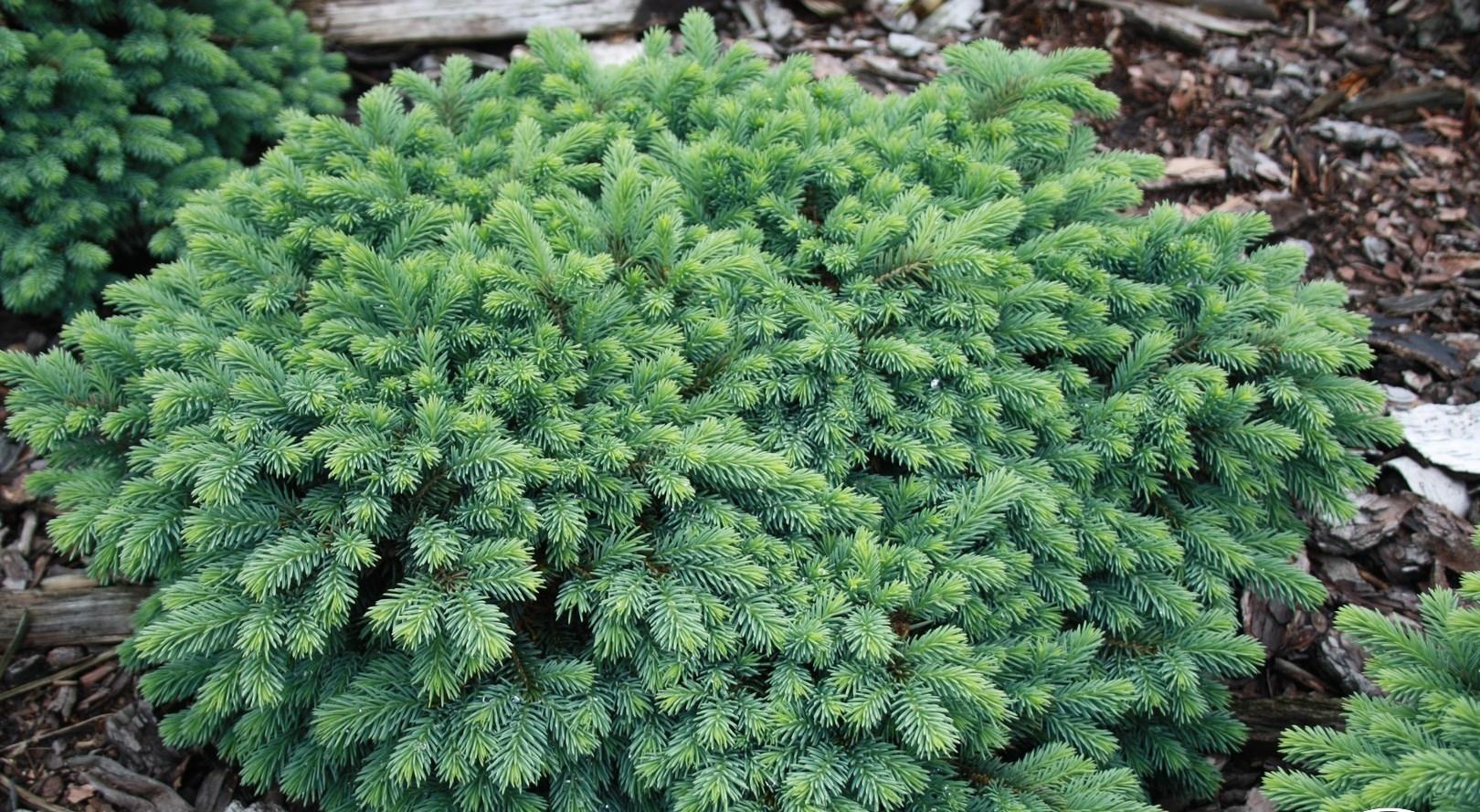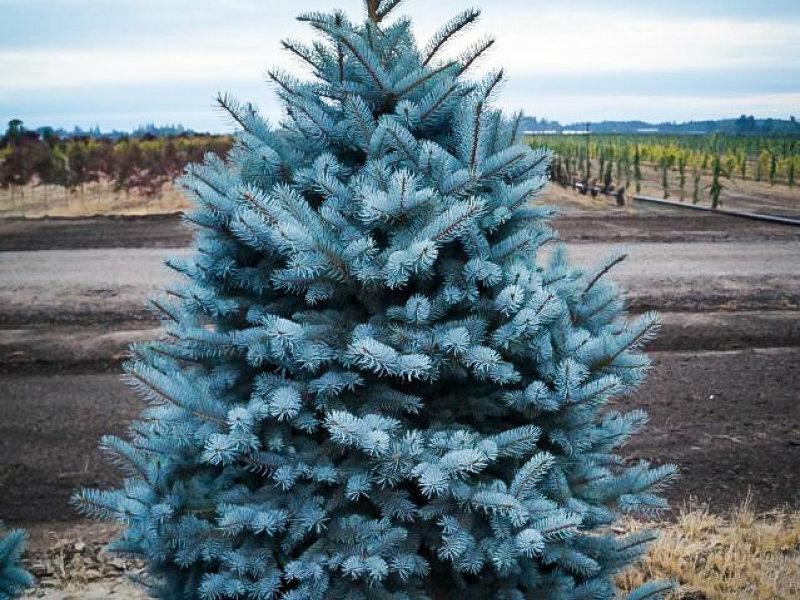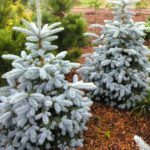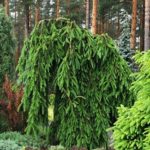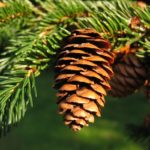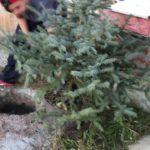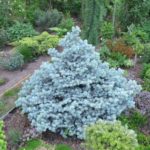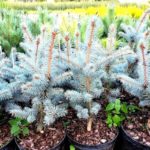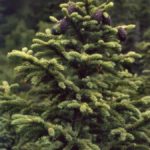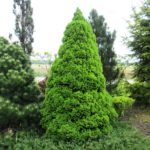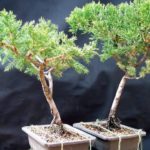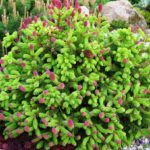Blue spruce is an evergreen coniferous plant that retains its decorative properties all year round. This culture is very popular among gardeners and landscape designers because it looks very unusual. At the same time, it is important to choose the right variety for cultivation and provide the crop with quality care. This will help to obtain a strong tree that has excellent decorative properties.
Description of the tree
Blue spruce has different types - prickly Herman Naue, Nimetz, Glauka Prostrata. They all differ in appearance.However, some general features can be identified.
Appearance
According to the description, blue spruce in nature reaches 30 meters, but sometimes trees are found even higher. The trunk reaches a height of 1.5 meters. Blue spruce bark is thin and scaly. The crown changes shape over time. In young trees it is cone-shaped, and in older plants it is cylindrical.
The crown has a blue color with a bluish, greenish or silvery tint. The needles have 4 edges that are clearly visible. They reach 1.5-3 centimeters in length. The needles retain their unchanged appearance for about 4 years.
Features of buds
Different types of blue spruce are characterized by red-purple cones, which change color as they dry and become pale brown. The length of the fruits reaches 6-11 centimeters, and the width - 2-4. The seeds of the cones are black in color. Each grain measures 3-4 millimeters and has light brown wings 10-15 millimeters long.
Spruce varieties
Today there are many varieties of blue spruce known, which differ in appearance. The most popular varieties include the following:
- Glauka - grown by many gardeners. This variety is valued for its attractive symmetrical crown, which has a conical shape. Mature trees grow up to 20 meters in height. In this case, the crown width is 6-8 meters.
- Blue Diamond - a relatively young variety, which was bred in 1990. This plant is characterized by the beautiful blue color of its needles. Mature trees reach a height of 5-7 meters. They are characterized by a thick and dense crown of a conical shape. An important advantage of the plant is its resistance to diseases and the influence of climatic factors.
- Edith - this culture is characterized by slow growth.It is characterized by the silver-blue color of the needles, which remains unchanged all year round. By the age of 10, the tree reaches 2-3 meters, and by the age of 30 – 7-10. The variety is resistant to frost. At the same time, it is very demanding on the soil.
- Hoopsie – is one of the most beautiful blue spruce trees, the crown of which has the shape of a regular cone. The plant reaches a height of 15 meters. The width of the crown is 4.5 meters. Young spruce trees are characterized by light blue-white needles. As they age, they acquire a beautiful silvery tint. The culture is characterized by resistance to drought. It does not tolerate high soil moisture. In hot weather, the plant needs to be watered.
- Oldenburg – this plant has a wide-conical crown shape with pronounced tiers and long silver-blue needles. The culture is characterized by slow growth. By the age of 10, the tree grows to 2-3 meters. The maximum height is 12-15 meters. This variety of spruce is considered very light-loving. It is characterized by high sensitivity to excess moisture. The tree is great for cities because it can easily withstand drought and air pollution.
- Fat Albert – this culture is characterized by an attractive lush crown of a neat conical shape. It has beautiful silver-blue needles. Fat Albert is characterized by resistance to frost. It thrives in winter and is still able to withstand air pollution. The variety is considered very light-loving. However, it can grow in the shade. In this case, the needles darken.
- Kaibab - distinguished by a columnar crown, which has a rich silver color. Mature trees reach a height of 5-7 meters. Moreover, every year the needles become more silver-turquoise.Young trees are asymmetrical and have greenish needles. But as they grow, these shortcomings are eliminated. Mature spruce trees are characterized by a lush crown measuring 3 meters in width. This variety is considered to be quite light-loving. At the same time, it is characterized by resistance to frost.
- Waldbrun – this variety belongs to dwarf plants. It has a loose crown, which takes on a cone shape with age. The tree is characterized by slow growth. It reaches a height of 80 centimeters. The width of the plant is 1 meter. Immediately after planting, spruce of this variety is distinguished by bright silver-blue needles. However, it becomes duller with age. The variety is resistant to frost and is very light-loving. However, it also develops well in partial shade.
- Bialobok is a compact tree that grows slowly. It reaches a maximum of 2-3 meters in height. In this case, the crown width is approximately 1 meter. A distinctive feature of the culture is its silver-blue needles. In early spring it becomes two-colored. Straw or light yellow needles appear on new growth. The crown is quite dense and has an irregular shape. This is especially true for young spruce trees. The variety is considered frost-resistant and sun-loving. It is undemanding to growing conditions and is suitable for planting in the city.
Area
Blue spruce usually grows at an altitude of 1800-3000 meters above sea level. Therefore, it is mainly distributed in the mountains and foothills - near rivers and streams. North America is considered the birthplace of the plant. This is where it is found most often.At the same time, the crop is considered very picky, which is why it is often grown in other areas.
How to grow properly
Growing blue spruce has certain characteristics. They should definitely be taken into account in order to get a quality plant.
Landing Features
To grow a crop of the required height and decorativeness, it is important to carry out planting work correctly. It is recommended to do the following:
- In mid-April, place the seeds in a ready-made growth stimulator and treat them with Fundazol. At the same time, it is recommended to take 20 grams of product per 10 liters of water. Then it is recommended to dry the seed material and you can begin preparing the soil for planting.
- Plant the seeds in peat moss with fertilizers. For 1 bucket of peat you should use 20 grams of ammophos and 35 grams of lime.
- Place the prepared mixture in plastic pots with drainage holes. In this case, it is first recommended to place 15 centimeters of drainage at the bottom.
- Press down the soil, put up to 5 seeds in each pot and sprinkle with 5 centimeters of peat. They must first be mixed with pine sawdust.
- After 25 days, sprouts will appear. It is recommended to leave the strongest one and remove the rest.
It is recommended to spray the seedlings daily for 2 weeks after planting. Then this needs to be done as needed - it all depends on the dryness of the soil. Replanting into the ground should be done every spring. For transplantation, it is recommended to prepare a depression measuring 60x70 centimeters. It is worth putting a drainage layer at the bottom - for example, limestone measuring 5-10 centimeters.
It is recommended to pour a composition of turf, leaf soil, peat and sand in equal proportions into the pit.You should make a hole in the ground, place the spruce there and compact the soil. Then sprinkle the plantings with sawdust, mixing them with peat.
Care requirements
Blue spruce requires fertilizing during the first 5-7 years. Then it grows on its own. In the first years, mineral preparations are required.
This coniferous crop needs watering. Particular attention should be paid to young trees when growing crops. One-year-old spruce trees need to be moistened up to 6 times a day, but not very much. It is important to take into account the structure of the blue spruce roots. The roots are located superficially, so the evergreen crop cannot absorb a lot of water at once.
In hot weather, mature spruce trees should be watered once a day. For 1 tree it is worth using 10 liters of water. Plantings need to be watered in the evening. It is recommended to use warm water. Blue spruce responds well to spraying and sprinkling. As a result, the needles get rid of dust, and the spruce becomes very beautiful.
To form a beautiful crown, the spruce needs to be pruned. First, the gardener removes dry branches, and then trims healthy shoots. The crown is formed within 8 years. Then the tree independently gives the crown the required shape. You should use a sharp tool for pruning. In this case, it is recommended to treat the sections with a healing composition.
Diseases and pests
Blue spruce often suffers from pest attacks and disease development. They can worsen the appearance of the plant and even provoke its death. To prevent pathologies and protect the crop from parasites, it is recommended to systematically inspect the spruce and, if necessary, treat damaged fragments.
Application in design
Blue spruces are often used in decorative purposes.They are used to decorate a garden, vegetable garden or street. Depending on the form, the crop is used to decorate flower beds or large summer cottages. The plant looks great with stones and decorative figures.
Blue spruce is a common crop that fits perfectly into a wide variety of garden arrangements. To grow a tree successfully, it requires careful care.

